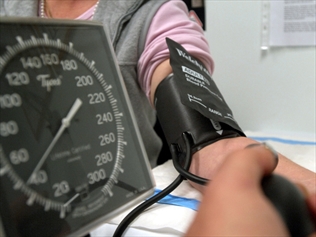
Overhauling blood pressure treatment could potentially save many lives. Source: AAP
OVERHAULING blood pressure treatment could potentially save many lives and reduce the burden of chronic disease on the health system, experts say.
A GROUP of international researchers – including those from the George Institute in Sydney – analysed data from 11 trials involving more than 50,000 people.
They concluded that fewer people would die or suffer serious heart conditions if clinicians changed the way they decide who to give blood pressure-lowering treatments. There are 4.6 million Australians with high blood pressure, a condition that can cause kidney disease, heart attacks and stroke, the latest statistics from 2011 show. Present guidelines to lower blood pressure focus on just the pressure level. High blood pressure, or hypertension, would be diagnosed when blood pressure is 140/90mmHg or above most of the time. But the study, published in The Lancet, recommends GPs use risk assessment – and not only the blood pressure level – to decide on who to treat, taking into consideration age, sex, lipid levels, smoking status and disease history. Professor Bruce Neal, lead researcher on the project from the George Institute, said someone with “normal” blood pressure could still be at high risk, and benefit from treatment. Likewise, people with only slightly raised levels may be at low risk and may not need treatment. For example a young woman with a systolic, or maximum, reading of 145mmHg could reasonably persevere with efforts to change her lifestyle rather than going straight to drug therapy, Prof Neal said. This would do for blood pressure what clinicians did for cholesterol a decade ago when they shifted to a risk-based approach to determine who should get cholesterol-lowering treatment, he said. “The blood pressure field has lagged far behind because we haven’t had this type of evidence until now,” he said. Prof Neal said if GPs targeted treatment at the highest risk patients, similar health benefits could be achieved with fewer prescriptions written.
